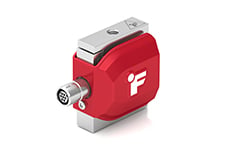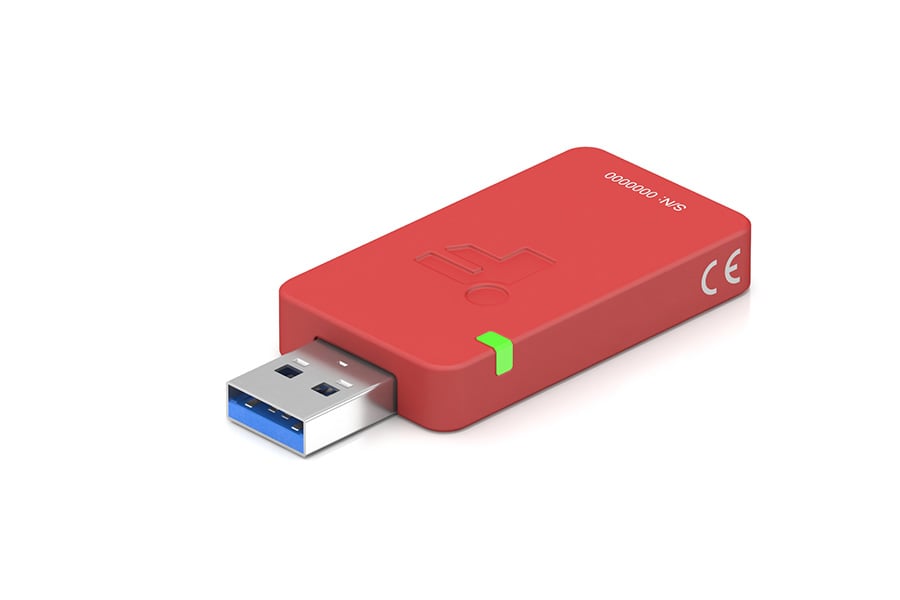What is Center of Gravity (CG)?
The center of gravity (CG), also known as the center of mass, represents the average position of an object's weight or mass in space and it’s obtained by averaging its weight distribution. Center of gravity also represents the balance point of an object and, suspending an object from its center of gravity ensures perfect balance. Applying a force directly to the center of gravity results in pure translation, while applying a force off-center causes the object to rotate around its center of gravity.
During the design process of aircraft, spacecraft, and even automobiles, calculating the center of gravity is crucial, as it significantly influences the aircraft's stability and performance of these vehicles. In the aerospace industry, it's imperative that the center of gravity measurement is precise, as it impacts flight dynamics, stability, and fuel efficiency. For example, aligning the direction of thrust of a rocket turbine so that it pushes precisely through the center of gravity of the rocket or aircraft is key to achieving a straight flight.
How are load cells employed in center of gravity scales?
The center of gravity can be calculated using the formula CoG = (ΣD* W) / ΣW, where CoG represents the location of the center of gravity. This formula involves summing the product of distance and weight, and then dividing it by the sum of all the weights. The center of gravity is denoted by coordinates. In the x-direction, the formula can be written as CoGx = (ΣDx* W) / ΣW. Similarly, in the y-direction, the formula is represented as CoGy = (ΣDy* W) / ΣW.
The center of gravity of an object can be measured by a multi-sensor scale, typically utilizing either a four load cell or a three load cell scale. The object is positioned at the center of gravity scale platform, and the weight of the object is measured individually by the load cell sensors that are located at each of the four corners of the scale. The positions of the four load cells relative to the origin are used to calculate the sum of moments, which is then divided by the total weight of the object to determine the center of gravity x and y coordinates.
To calculate the x-axis coordinate:
X-axis = (W1X1 + W2X2 + W3X3 + W4X4)/(W1+W2+W3+W4)
To calculate the y-axis coordinate:
Y-axis = (W1Y1 + W2Y2 + W3Y3 + W4Y4)/(W1+W2+W3+W4)
NOTE: The notation "F" (Force) in the right-hand side diagram is equivalent to the "W" (weight) in the formulas above.
Similarly, the process can be repeated after rotating the object by 90 degrees to calculate the center of gravity in the other 4 cartersian planes. This iterative process ensures a more accurate center of gravity measurement.
For large objects, such as a VTOL drone or an aerospace capsule, FUTEK recommends using LCF Series universal pancake load cells with the center of gravity equipment. Pancake Load Cells are frequently used in force measurement applications because their low profile and donut-style shape make them easy to install within limited real estate. FUTEK Pancake Load Cells are available in a wide capacity range from 25 lbs to 100,000 pounds, in both Stainless Steel or Anodized Aluminum flexure.
For small objects, such as a propeller blade, FUTEK recommends a smaller yet reliable and precise load cell: LSB20x Miniature S-Beam Load Cell, which is part of a highly accurate and versatile range of miniature S-Type load cells with robust overload protection, unique capabilities, and a capacity range from 10 grams up to 100 lbs.
How it Works
Load Cell Installation: Mount the load cells equidistantly on the four corners of the center of gravity measurement equipment, ensuring proper alignment and secure attachment. FUTEK offers the services of our accredited A2LA load calibration lab to ensure that our sensors are shipped with proper calibration.
Signal Conditioner Installation: The load cell sensors are connected to either an analog or a digital signal conditioner. It allows the mV/V sensor of the weight sensor to be connected to a data acquisition system (DAQ) or PLC.
Integration and Data Collection: Integrate the signal conditioners with the data acquisition system for real-time monitoring and analysis using FUTEK SENSIT™ Test and Measurement Software. The data collected from the center of gravity by the FUTEK load cell can then be used to determine the center of gravity as per the formulas above.
Contact Us
Please Contact Us with questions.
What is Center of Gravity (CG)?
The center of gravity (CG), also known as the center of mass, represents the average position of an object's weight or mass in space and it’s obtained by averaging its weight distribution. Center of gravity also represents the balance point of an object and, suspending an object from its center of gravity ensures perfect balance. Applying a force directly to the center of gravity results in pure translation, while applying a force off-center causes the object to rotate around its center of gravity.
During the design process of aircraft, spacecraft, and even automobiles, calculating the center of gravity is crucial, as it significantly influences the aircraft's stability and performance of these vehicles. In the aerospace industry, it's imperative that the center of gravity measurement is precise, as it impacts flight dynamics, stability, and fuel efficiency. For example, aligning the direction of thrust of a rocket turbine so that it pushes precisely through the center of gravity of the rocket or aircraft is key to achieving a straight flight.
How are load cells employed in center of gravity scales?
The center of gravity can be calculated using the formula CoG = (ΣD* W) / ΣW, where CoG represents the location of the center of gravity. This formula involves summing the product of distance and weight, and then dividing it by the sum of all the weights. The center of gravity is denoted by coordinates. In the x-direction, the formula can be written as CoGx = (ΣDx* W) / ΣW. Similarly, in the y-direction, the formula is represented as CoGy = (ΣDy* W) / ΣW.
The center of gravity of an object can be measured by a multi-sensor scale, typically utilizing either a four load cell or a three load cell scale. The object is positioned at the center of gravity scale platform, and the weight of the object is measured individually by the load cell sensors that are located at each of the four corners of the scale. The positions of the four load cells relative to the origin are used to calculate the sum of moments, which is then divided by the total weight of the object to determine the center of gravity x and y coordinates.
To calculate the x-axis coordinate:
X-axis = (W1X1 + W2X2 + W3X3 + W4X4)/(W1+W2+W3+W4)
To calculate the y-axis coordinate:
Y-axis = (W1Y1 + W2Y2 + W3Y3 + W4Y4)/(W1+W2+W3+W4)
NOTE: The notation "F" (Force) in the right-hand side diagram is equivalent to the "W" (weight) in the formulas above.
Similarly, the process can be repeated after rotating the object by 90 degrees to calculate the center of gravity in the other 4 cartersian planes. This iterative process ensures a more accurate center of gravity measurement.
For large objects, such as a VTOL drone or an aerospace capsule, FUTEK recommends using LCF Series universal pancake load cells with the center of gravity equipment. Pancake Load Cells are frequently used in force measurement applications because their low profile and donut-style shape make them easy to install within limited real estate. FUTEK Pancake Load Cells are available in a wide capacity range from 25 lbs to 100,000 pounds, in both Stainless Steel or Anodized Aluminum flexure.
For small objects, such as a propeller blade, FUTEK recommends a smaller yet reliable and precise load cell: LSB20x Miniature S-Beam Load Cell, which is part of a highly accurate and versatile range of miniature S-Type load cells with robust overload protection, unique capabilities, and a capacity range from 10 grams up to 100 lbs.


